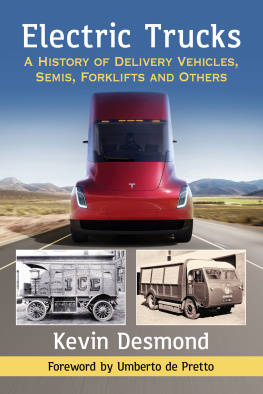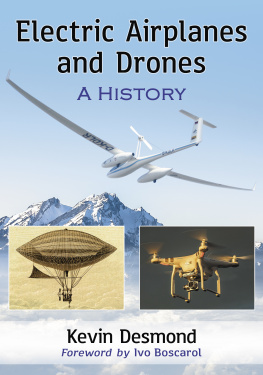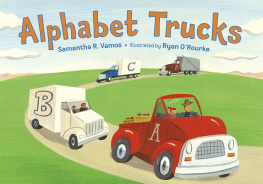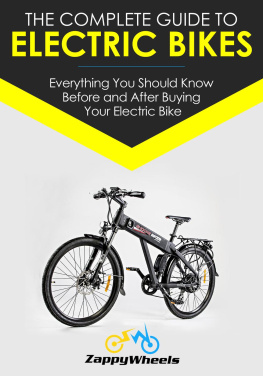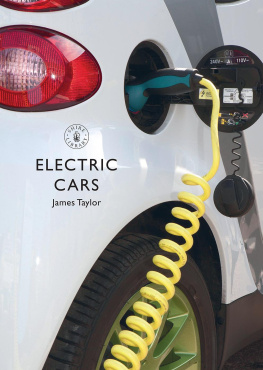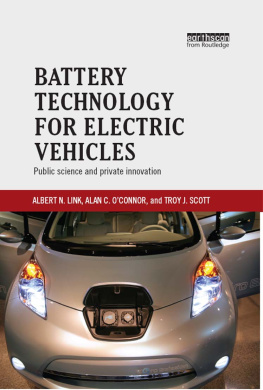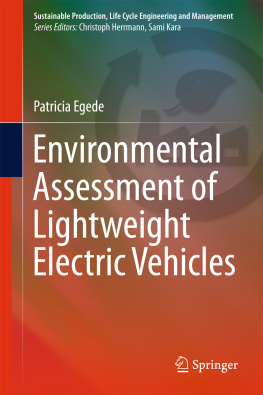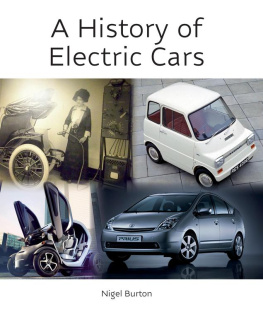
Also by KEVIN DESMOND
AND FROM MCFARLAND
Electric Buses: A History Including Minivans, Taxis and Trolleys (2020)
Electric Motorcycles and Bicycles: A History Including Scooters, Tricycles, Segways and Monocycles (2019)
Electric Airplanes and Drones: A History (2018)
Electric Boats and Ships: A History (2017)
Innovators in Battery Technology: Profiles of 95 Influential Electrochemists (2016)
Gustave Trouv: French Electrical Genius (18391902) (2015)
Electric Trucks
A History of Delivery Vehicles, Semis, Forklifts and Others
KEVIN DESMOND
Foreword by UMBERTO DE PRETTO

McFarland & Company, Inc., Publishers
Jefferson, North Carolina
LIBRARY OF CONGRESS CATALOGUING DATA ARE AVAILABLE
BRITISH LIBRARY CATALOGUING DATA ARE AVAILABLE
e-ISBN: 978-1-4766-3618-4
2020 Kevin Desmond. All rights reserved
No part of this book may be reproduced or transmitted in any form or by any means, electronic or mechanical, including photocopying or recording, or by any information storage and retrieval system, without permission in writing from the publisher.
Front cover: Insets, left to right, In the days before refrigerators, huge blocks of ice would be delivered by firms such as the Standard Plate Ice Company and Consolidated Ice, using Edison batteries (U.S. Department of the Interior, National Park Service, Thomas Edison National Historical Park); between 1938 and 1941, over seventy DV4 4-ton refuse trucks were purchased by the City of Birmingham Salvage Department (Transport Museum Wythall); background, Elon Musks Tesla Semi prototype (author collection).

McFarland & Company, Inc., Publishers
Box 611, Jefferson, North Carolina 28640
www.mcfarlandpub.com
To
(Hermes, Greek god of commerce)
(Elektra)
, , ,
(Pyrois, Aeos, Phlegon, Aethon,
the four horses of Helios)
Acknowledgments
The author would like to thank the following for their kind help in this book:
Ann de Astui; Fondation Automobile Marius Berliet; Courtney Cesar (Antique Truck Historical Society); Lucien Chanuc; Patrick Collins (National Motor Museum Trust); Kendra Cook (Boyertown Museum of Historic Vehicles); Jay K Crist; Barbara Davies (Clarendon Hills Historical Society); Leonard DeGraaf (Thomas Edison National Historical Park); Alison Duce (Kelham Island Museum); Paul Grey (Transport Museum Wythall); Bob Hakewill; Stan Howell Harold (Washington Library Center; Chicago Public Library); Craig Harman (The Lincoln Highway National Museum & Archives); Senator John Heinz History Center; Ted Kemp (IEET); Deb Henderson (Shell International Ltd.) Leslie M Kendall (Petersen Automotive Museum); Damien Kuntz (Muse EDF, Electropolis); Florian Martini (Siemens AG); Gijs Mom (Technical University of Eindhoven); Stuart Ray (Ipswich Transport Museum); Jean-Nol Raymond; Keith Roberts, Valerie Shoffner; Westinghouse Electric Corporation Photographs, Detre Library & Archives, Heinz History Center; Sebastian Wormell (Harrods Corporate Affairs).
Thanks also to my wife Alexandra and Kathryn Cooper (my indexer and proofreader).
A well-known operator once said that his idea of a commercial vehicle was a box on wheels.
The Commercial Motor, April 27, 1945
The electric vehicle since its very first existence has always been a vhicule utilitaire in the meaning that one must give to this phrase.
Louis Kriger, Honorary President of the French Syndicate of Electric Vehicle Builders
I believe that ultimately the electric motor will be universally used for trucking in all large cities, and that the electric automobile will be the family carriage of the future. All trucking must come to electricity. I am convinced that it will not be long before all the trucking in New York City will be electric.
Thomas Alva Edison in an interview with Automobile Topics in May 1914
In a short time the use of horse drawn truck wagons for Company work will be as rare as the dodo bird and the left-handed monkey wrench. Youll see a pair of horses drawing one of our rigs about as often as you see a gas jet illuminating the Edison Building. Every vehicle engaged in Company business including dump wagons and pole wagons will be operated by electricity by the first of the year.
Edison Round Table, 31 October 1921, from Technology and Culture, July 2001
Foreword
by Umberto de Pretto
Most vehicle manufacturers are working hard on research and trying to outpace their competitors in bringing viable, consumer-friendly, mass-produced electric vehicles to the market.
What this book reminds us is that electric trucks are also part of our past as well as our present. It tells us that electricity became the fuel of choice for short-haul deliveries as horses became obsolete. The combustion engine eventually took over, as we all know, though it was normal to see electric-powered vehicles delivering milk in UK cities until relatively recently, and many types of electric vehicles are still used extensively in warehouses, ports, airports, terminals and factories around the world.
Im honored to be writing this foreword because road transport is both my jobIm Secretary General of IRUand, more importantly, my passion.
IRUs members represent close to a million road haulage companies, from the smallest to the largest, and from across the globe. The organization has been around for 70 years and weve seen a huge amount of innovation in that time. Technology, for example, has helped cut toxic emissions from trucks by up to 98 percent from diesel engines. But theres more to do.
As Kevin Desmond tells us, there has been significant progress in the development of the new generation of electric trucks, helped by lithium-ion battery technology. However, it looks like were going to have to work even harder because long-haul journeys, even with lithium-ion, still arent viable.
Indeed, when I first joined IRU in 1995, a 20-tonne battery would have been required to provide the same energy needed to operate a 40-tonne diesel powered truck. Today that figure has dropped to 9 tons. But thats still nine tons of goods that are not being transported. The challenge to the road transport industry, and beyond, is to keep pushing the boundaries, so we must keep searching for new innovations.
That is a lesson I learned growing up in Canada. Its a big, wild place and a major part of being Canadian is the philosophy of protecting and preserving nature. Road transport is also important there because we need to move things, and people, across vast distances. Perhaps thats why Ive been a transport geek since I was very young. Theres hard evidence: my office is full of model trucks, buses, coaches and taxis both modern and antique.
What Ive always found particularly fascinating is technological development. This must have been ingrained in me when, at 16 years old, I rebuilt (or rather I helped my good friend who knew what he was doing) my fathers 350 cubic inch Oldsmobile Cutlass motor to increase the stock horsepower from 260 to around 350. What I learned the hard way is that my fuel consumption increased dramatically to 38 litres/100km! Today that sort of horsepower can be achieved with less than 6 litres/100km. Thats the huge difference technology makes.
Next page
